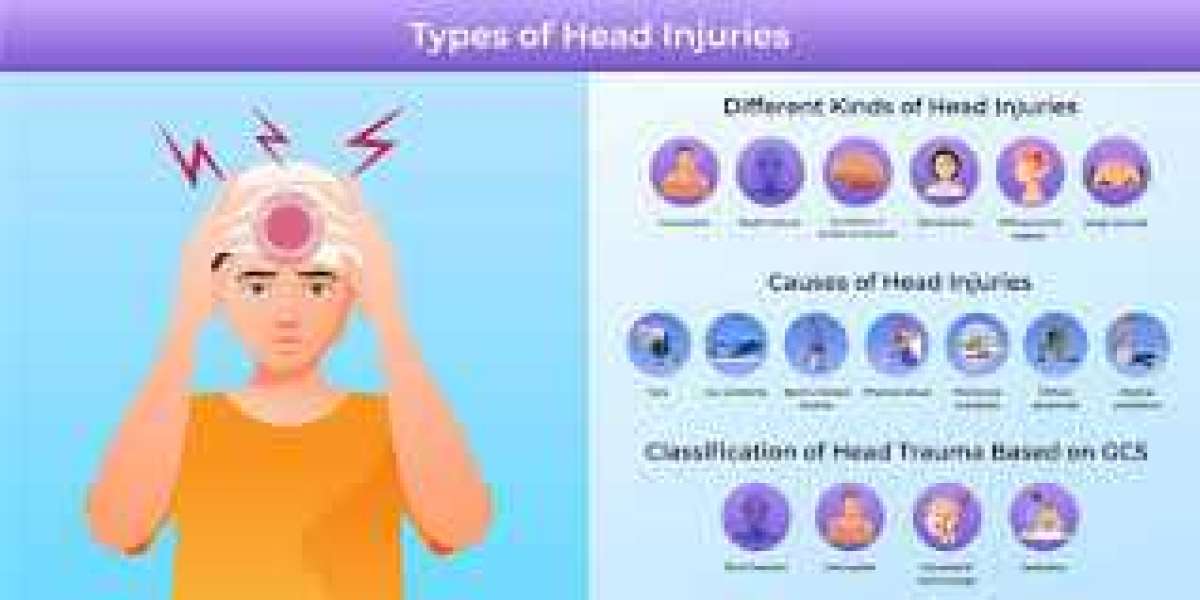Head injuries are a serious medical concern that can have lasting impacts on an individual’s health, cognition, and quality of life. Whether caused by sports, accidents, or falls, head injuries require immediate attention and proper management to prevent complications. This comprehensive guide will explore how to prevent head injuries, identify their symptoms, and implement effective treatment strategies to ensure long-term health and safety.
Understanding Head Injuries
Head injuries refer to any trauma to the scalp, skull, or brain. They range from mild concussions to severe traumatic brain injuries (TBIs). The severity of a Head Injury Depends on the force of impact, the location of the injury, and the individual’s overall health.
Common causes of head injuries include:
Sports-related accidents
Motor vehicle collisions
Falls, especially in children and the elderly
Physical assaults
Workplace accidents
Understanding the types and causes of head injuries is the first step toward prevention and effective treatment.
Types of Head Injuries
Concussion
A concussion is a mild traumatic brain injury caused by a blow to the head or a sudden jolt. It temporarily disrupts brain function but typically does not cause permanent damage.Contusion
A contusion is a bruise on the brain tissue, often resulting from a direct impact. Severe contusions may require surgical intervention.Skull Fracture
A skull fracture occurs when the bone of the skull cracks or breaks. This type of injury can lead to complications if bone fragments press into the brain.Intracranial Hemorrhage
This refers to bleeding within the skull, which can occur in different areas, such as the epidural, subdural, or subarachnoid spaces. It is a life-threatening condition that requires immediate medical attention.Diffuse Axonal Injury
This severe injury occurs when the brain rapidly shifts inside the skull, tearing nerve fibers. It often results in long-term cognitive and physical impairments.
How to Prevent Head Injuries
Prevention is the most effective way to reduce the risk of head injuries. Here are practical steps to protect yourself and your loved ones:
1. Wear Protective Gear
Helmets: Always wear a helmet during activities like cycling, skateboarding, skiing, or contact sports. Ensure the helmet fits properly and meets safety standards.
Seat Belts: Buckle up every time you’re in a vehicle to reduce the risk of head injuries during collisions.
Workplace Safety Gear: Use hard hats and other protective equipment in construction sites or industrial settings.
2. Practice Safe Sports Techniques
Follow the rules of the game to avoid dangerous plays.
Learn proper techniques for tackling, heading, or diving to minimize the risk of injury.
Encourage coaches and trainers to prioritize safety during practices and games.
3. Childproof Your Home
Install safety gates at the top and bottom of stairs to prevent falls.
Use window guards and secure furniture to avoid tipping hazards.
Ensure playgrounds have soft surfaces like mulch or rubber to cushion falls.
4. Drive Responsibly
Avoid distracted driving, such as texting or eating while behind the wheel.
Never drive under the influence of alcohol or drugs.
Follow speed limits and traffic rules to reduce the risk of accidents.
5. Stay Active and Strengthen Balance
Regular exercise improves balance and coordination, reducing the likelihood of falls.
Consider activities like yoga or tai chi to enhance stability, especially for older adults.
Identifying the Symptoms of Head Injuries
Early identification of head injuries is crucial for effective treatment. Symptoms can vary depending on the severity of the injury and may appear immediately or develop over time.
Mild Head Injury Symptoms
Headache
Dizziness or loss of balance
Nausea or vomiting
Confusion or disorientation
Temporary memory loss
Sensitivity to light or noise
Moderate to Severe Head Injury Symptoms
Loss of consciousness
Persistent or worsening headache
Seizures
Slurred speech
Weakness or numbness in limbs
Clear fluid draining from the nose or ears
Agitation or unusual behavior
If you or someone else exhibits these symptoms, seek medical attention immediately.
First Aid for Head Injuries
Knowing how to respond to a head injury can make a significant difference in the outcome. Follow these steps:
Assess the Situation
Check for responsiveness and breathing. If the person is unconscious, call emergency services immediately.Control Bleeding
Apply gentle pressure to the wound with a clean cloth to stop bleeding. Avoid pressing directly on a suspected skull fracture.Stabilize the Neck
If a spinal injury is suspected, avoid moving the person. Keep the head and neck aligned until medical help arrives.Monitor Vital Signs
Watch for changes in consciousness, breathing, or pulse. Be prepared to perform CPR if necessary.Avoid Medications
Do not give the person aspirin or other blood-thinning medications, as they can increase the risk of bleeding.
Treatment Options for Head Injuries
The treatment for head injuries depends on the type and severity of the injury. Here are common approaches:
1. Rest and Observation
For mild concussions, doctors often recommend rest and limited physical or mental activity. Avoid screens, reading, or strenuous tasks until symptoms subside.
2. Medications
Pain relievers like acetaminophen can help manage headaches.
Anti-seizure medications may be prescribed for severe injuries.
Diuretics can reduce swelling in the brain.
3. Surgery
In cases of skull fractures, hematomas, or severe brain swelling, surgery may be necessary to remove blood clots, repair fractures, or relieve pressure on the brain.
4. Rehabilitation
Severe head injuries often require long-term rehabilitation, including physical therapy, occupational therapy, and speech therapy. These programs help patients regain lost skills and adapt to new challenges.
5. Psychological Support
Head injuries can lead to emotional and behavioral changes. Counseling or support groups can help individuals and their families cope with the psychological impact.
Long-Term Effects of Head Injuries
Some head injuries can have lasting effects, even after treatment. These may include:
Cognitive Impairments: Memory loss, difficulty concentrating, or reduced problem-solving abilities.
Physical Disabilities: Weakness, paralysis, or chronic pain.
Emotional Changes: Depression, anxiety, or mood swings.
Sensory Issues: Vision or hearing problems, tinnitus, or loss of taste or smell.
Regular follow-ups with healthcare providers are essential to monitor recovery and address any ongoing issues.
When to Seek Medical Help
Not all head injuries require emergency care, but certain situations demand immediate attention:
Loss of consciousness, even briefly
Persistent vomiting or severe headache
Seizures or convulsions
Difficulty waking up or staying awake
Slurred speech or confusion
Weakness or numbness in limbs
When in doubt, it’s always better to err on the side of caution and consult a healthcare professional.
Conclusion
Head injuries are a significant health concern, but with proper prevention, timely identification, and effective treatment, their impact can be minimized. By wearing protective gear, practicing safety measures, and staying informed about symptoms and first aid, you can protect yourself and your loved ones from the potentially devastating effects of head injuries.








